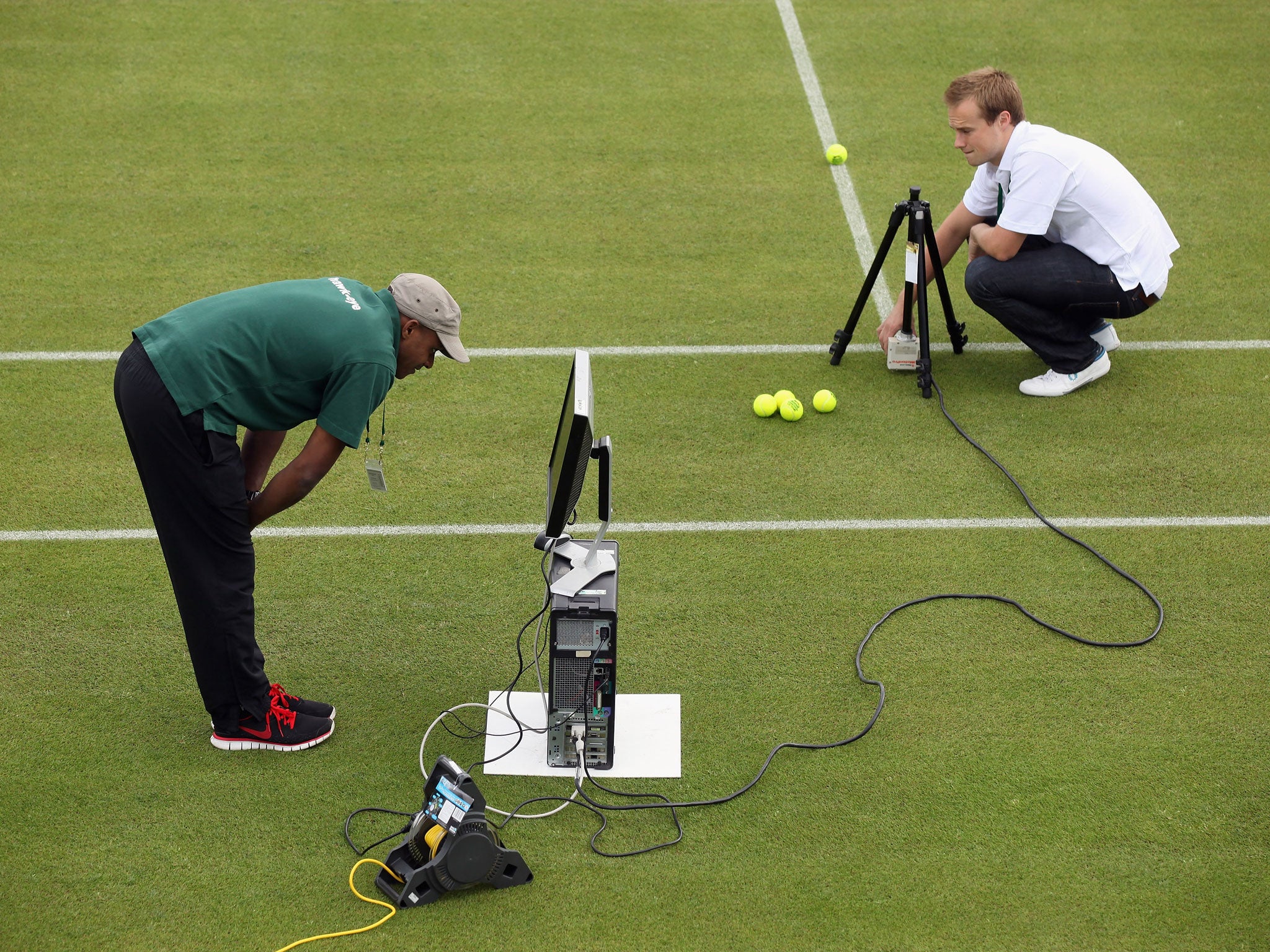Wimbledon 2014: Hawk-Eye says umpireless tournaments are on their way

Entire tennis tournaments could soon be played without umpires, a member of the team behind Wimbledon’s Hawk-Eye line calling system has said.
Luke Aggas, director of operations at Hawk-Eye Innovations, has revealed that several events are already considering replacing umpires and line judges in favour of an entirely computerised system. John McEnroe said recently that such a move would be “unbelievable for tennis” and would make the game “30 per cent more interesting”.
Mr Aggas told the Live@Wimbledon radio station: “There are a few events, not necessarily main draw events, maybe the exhibition-type events, that are thinking about utilising the system without lines judges and seeing whether that does increase the entertainment value to the match.”
He added that this could lead to a situation where the players end up “calling their own lines and challenging each other, which would be quite an interesting dynamic”. In an interview ahead of this year’s Championships, McEnroe said that such a system would make tennis “edgier” as players could be perceived as dishonest by the crowd.
“If you thought the other guy was blatantly cheating you could challenge it,” he said. “Then the fans would boo him and people would get way more into it. People would say: ‘See this guy? This guy is such a cheater’.”
Video: Preview of Wimbledon's day eight
Mr Aggas said it was “technically possible” for Hawk-Eye to monitor every line on the court and sound a loud beep whenever a ball was out – but that viewers and players might find this irritating. “It goes back to the entertainment value to the viewers at home,” he said. “Does a beep or similar actually bring that much to the game, or is the current protocol actually well placed?”
Last week, Wimbledon officials were criticised for allowing a match between Tomas Berdych and Marin Cilic to continue despite failing light, meaning that Hawk-Eye was no longer available to either player. The game eventually finished at 9.38pm on Friday, with Berdych defeated in straight sets.
Mr Aggas said the system should soon work in low light conditions. “It is an area that we’re looking into. As your digital camera, your smartphone, whatever you use, increases in resolution, features and functions on a year-by-year basis, that’s an area that we’re certainly trying to improve on,” he said.
Hawk-Eye is also trialling robotic cameras that track players’ every move on Wimbledon’s outer courts this year, which Mr Aggas said could help the athletes better understand the faults in their game. The data can tell them things such as how far they ran and where they spent the most time around the court.
Subscribe to Independent Premium to bookmark this article
Want to bookmark your favourite articles and stories to read or reference later? Start your Independent Premium subscription today.

Join our commenting forum
Join thought-provoking conversations, follow other Independent readers and see their replies